The auto tides have definitely begun changing in recent years, and one message that we hear time and again is this – EVs offer an invaluable way for all of us to reduce our carbon footprints. This is an undeniable fact, with EVs emitting around a quarter of the carbon dioxide of their gas-powered counterparts Read more
Whats New

The auto tides have definitely begun changing in recent years, and one message that we hear time and again is this – EVs offer an invaluable way for all of us to reduce our carbon footprints.
This is an undeniable fact, with EVs emitting around a quarter of the carbon dioxide of their gas-powered counterparts. In other words, a single EV can save about as much carbon as would be required to fly from JFK to Kansas City four times!
That’s a pretty impressive reduction, and in an age of climate crisis, it’s a benefit that none of us are in a position to overlook. As with anything climate-based, however, there is another side to the story.
Much like how it’s not particularly ‘good’ eco practice to ditch your existing plastic tubs for glass ones, many vehicle owners are conflicted about whether scrapping their old vehicles for shiny new EVs is actually in-line with their values.
Unfortunately, there’s no easy answer to that question but, in some cases, upgrading the car you’ve got with the environment in mind could be a better option. We consider why in this article.
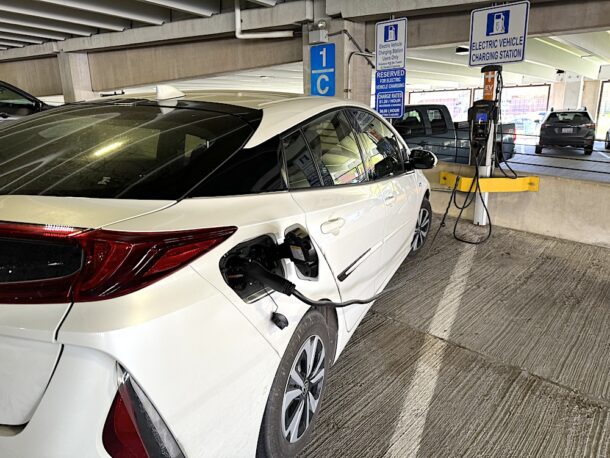
Breaking Down the Undeniable Benefits of EVs
A disclaimer – none of this is to say that EVs don’t remain one of the most effective ways to reduce our high emissions on the roads. If you’re genuinely looking for a new vehicle, there are undeniable benefits to delving into your EV options, and not just because the US has made a vow to use solely zero-emissions transportation by 2050.
In reality, EVs offer countless benefits on both the ownership and eco front, including –
- A holistically sound eco choice: Despite valid concerns about the climate cost of EV battery production, EVs remain a sound eco choice when considered holistically. Benefits including zero tailpipe emissions and reduced fossil fuel dependency are just the tip of the iceberg for vehicles that stand to significantly reduce carbon footprints across their lifespans.
- Reduced running costs: On average, EVs cost as much as half to run per mile than petrol and diesel cars. Admittedly, upfront costs on the majority of EVs do remain higher, but this is easily offset by the fact that EV ownership could save between $6,000-$12,000 over that vehicle’s lifetime.
- Improved performance: As more manufacturers turn their attention to electric production, EVs are quickly outstripping petrol cars in the performance stakes. For one thing, they’re significantly quieter to drive, making a more enjoyable experience. Most modern EVs are also now superior in terms of performance markers like torque and acceleration.
But, What About The Climate Cost of Used Cars?
So far so good, but if you already have a car, you probably can’t just double it up with an EV right away. You need to work out what to do with your old vehicle, and that’s sort of where the problem lies. After all, even if you sell that old car, someone will still have it on the road. Plus you’ll be adding your EV to the mix.
So, why not get rid of that old vehicle so no one can have it? That may not be a great eco alternative, either. Luckily, most scrap yards do now operate recycling schemes that’ll see them reusing many of an old car’s raw components, but the process is by no means fool-proof.
After all, there’s simply no telling which scrapped parts will ultimately end up in landfill. The chances are that at least a few materials like metal, plastic, and rubber, will make their way to landfill eventually, where they’ll take years to decompose.
Even if some parts are recyclable, intensive extraction processes can release carbon emissions of their own. All of which are a direct result of your EV replacement. Add that to the estimated 10 tons of greenhouse gases required for EV production, and you’re looking down the barrel of yet another environmentally costly choice.
Fear Not, There Are Factors To Consider
So far so worrying, but we have some good news – there are plenty of factors to consider when thinking about whether or not switching to an EV will ultimately be an eco-friendly choice. Because, as you can probably tell, this is no cut-dry issue! There are certainly no simple comparisons to be made because, in reality, every switch will throw up different realities.
It’s particularly worth considering the environmental impact of your current vehicle, which will have a major sway over how much an EV would reduce your emissions. Particular areas of focus should include –
- The carbon emissions of your current vehicle
- The car’s age and mileage
- Your particular preferences
Carbon emissions are a particularly important consideration, as some petrol models are inevitably better than others. You may find, then, that it makes less sense to keep a high-emissions model like the Mercedes-Benz G-Class G 63 AMG than it does to stick with a lower-emission option like the BMW 1 Series.
With some concerns expressed about potential EV longevity issues, keeping and upgrading a newer car with low emissions will typically be a more climate-conscious option than replacing that car with an EV because it seems like the best option.
Is It Really As Simple As That?: The Potential of Eco-Upgrades
Of course, even if you’re choosing to stick with your vehicle through thick and thin, making this the best environmental choice still requires you to consider upgrades with the environment in mind. Luckily, there are plenty of things you can do to make even petrol or diesel cars more environmentally friendly, such as –
# 1 – Eco Parts Upgrades
Your vehicle will inevitably need new parts at some stage, and choosing eco alternatives at this time can make a huge difference to that vehicle’s carbon footprint overall. Luckily, there are plenty of viable options to choose from when the time comes.
The most obvious choices here include options like low-rolling resistance tires and aerodynamic enhancements such as carefully selected spoilers. A cat back exhaust could be another great option, as it reduces your vehicle’s weight and can also help to increase fuel efficiency and filter out harmful byproducts. In each instance, simply check the specs of any replacement, and choose the ones that look the most beneficial.
# 2 – Regular Maintenance
The better maintained your car, the more efficiently it’ll run. That’s a fact, and it highlights the importance of annual services, which will typically consider priorities like fuel changes and crucial engine checks to keep things ticking over.
Thorough checks of vehicle functionality will also help to significantly enhance benefits like fuel efficiency, by ensuring your engine is up to speed and equipped to perform seamlessly.
# 3 – Eco-Friendly Fluids
Many fluids in your vehicle will contain toxic elements that can contaminate water sources and generally do a fair amount of damage. Switching fluids in your vehicle for eco-friendly alternatives can make a huge environmental difference by reducing your output of harmful chemicals.
Top switches to consider include –
- Synthetic oil: Synthetic oil is generally better for your vehicle and offers benefits like reduced engine friction for a longer life. It also breaks down more slowly to ensure less waste over time.
- Coolants/windscreen wash: Always choose non-toxic, biodegradable coolants/windscreen wash.
- Brake fluid: High-quality brake fluid that meets safety standards can significantly reduce environmental impact overall.
# 4 – Switch to Battery
If you’re willing to go big with vehicle upgrades, then switching to a battery-powered engine could be a great option. This will make your engine even more eco-friendly than a hybrid, which will still rely on some degree of fossil fuels. By comparison, a battery-powered engine relies on lithium-ion power cells, which are both lightweight and easily recyclable.
# 5 – Make Small Positive Changes
It’s easy to focus on the ‘big’ stuff when it comes to reducing your vehicle’s environmental impact, but small-scale changes can be just as impactful, and they’re easy for everyone to implement.
The top small changes to make include –
- Avoid filling your engine to the top, as this can result in harmful vapors and fuel seepage.
- Avoid unnecessary idling by switching off the engine if you’re stationary for extended periods.
- Reduce your A/C usage in place of opening the window where possible, particularly on short journeys.
In Conclusion: The Choice is Down to You
Ultimately, there is no right or wrong answer as to whether it would be more sustainable to upgrade rather than replace your old vehicle. The choice is fundamentally dependent on the car model you’ve got and the amount of work you’re willing to put in to reduce its emissions.
However, if you do feel like loyalty is the most eco-conscious choice for you, then these tips for eco upgrades are guaranteed to make a difference to your vehicle’s harmful outputs. What’s more, these should become ongoing efforts that you keep on top with steps like regular maintenance to make sure you can stand by your decision for many years to come!

Success in renovation comes from structured preparation, guessing or improvising along the way often leads to missed steps, unexpected repairs, and extra costs. A well-thought-out, phased approach ensures every aspect of the project is addressed in the right order, saving you time, money, and unnecessary stress. Hastily Instruct an Architect Before starting discussions with an Read more
Success in renovation comes from structured preparation, guessing or improvising along the way often leads to missed steps, unexpected repairs, and extra costs. A well-thought-out, phased approach ensures every aspect of the project is addressed in the right order, saving you time, money, and unnecessary stress.
Hastily Instruct an Architect
Before starting discussions with an architect, it’s essential to understand how you live and how you want to use your home. Rushing into layout decisions without considering your lifestyle often leads to repeated changes. This can be particularly problematic when submitting a planning application, where getting it right the first time is crucial. It might also affect the overall design, leaving you with results you might later regret.
Instead of focusing immediately on creating more space, take the time to clarify your priorities. Think about how the design can improve your quality of life and go from there. Your renovation should aim to create a more functional, enjoyable home while also increasing your property’s value.
Insufficient Budget Allocation for the Project
Calculating renovation costs can be challenging. Material and labor expenses can vary widely based on your location and the availability of skilled contractors. Even if you choose to take on the work yourself to save on costs, unexpected issues could arise, increasing the overall expense.
It’s always wise to gather multiple quotes from a licensed pro to get a clearer picture of potential costs. For larger projects, especially those that might expose hidden problems like structural damage or water issues, it’s essential to set aside extra funds beyond the initial estimate.

Failing to Verify Planning Permission Requirements
Most home renovation projects can be completed without the need for formal planning permission, but it is essential to ensure you obtain building regulations approval where required. Overlooking this step can lead to serious complications down the road. Adding features like an extension, sunroom, or loft conversion is an excellent way to boost both the space and value of your property.
However, larger-scale renovations are more likely to trigger planning rules and regulations. While it’s often possible to apply retrospectively, if the local planning department rejects your plans, you may face the costly prospect of altering the work or even removing it entirely.
Taking Down Structural Walls
It’s possible to remove load-bearing walls, but a qualified structural engineer must first confirm proper structural support. This ensures that taking down a wall won’t weaken the building’s stability. Creating open-plan living areas by removing walls has grown increasingly popular over the past 20 years.
However, this isn’t a simple decorative task. It requires precise calculations and the installation of a suitable supporting beam or RSJ to carry the load from above. A structural survey might also be needed. If you attempt to take down structural or internal walls on your own, you risk significantly increasing renovation costs, as the resulting repairs can be extensive.
Remaining Silent
If you’re not happy with your renovation, speak up right away. You know what you want. Delaying the conversation could lead to unnecessary frustration or a finished product you’re not satisfied with. Communicating your concerns early with your renovation contractor or project foreman makes it easier to address the issue and find the right solution. A trustworthy contractor will always work with you to achieve the outcome you envision, ensuring your investment is worthwhile.
Endnote
Avoiding these common pitfalls can help your renovation run more smoothly and save you money. Partnering with reliable renovation professionals keeps your project on schedule and aligned with your vision.
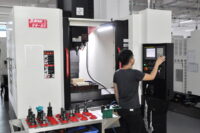
Manufacturing has always been a cornerstone of progress, constantly evolving to meet the demands of a changing world. Among the many advancements that have shaped this industry, precision cutting stands out as a transformative innovation. From its early manual origins to today’s highly sophisticated automated systems, precision cutting has redefined efficiency, accuracy, and the quality Read more
Manufacturing has always been a cornerstone of progress, constantly evolving to meet the demands of a changing world. Among the many advancements that have shaped this industry, precision cutting stands out as a transformative innovation. From its early manual origins to today’s highly sophisticated automated systems, precision cutting has redefined efficiency, accuracy, and the quality of manufactured goods. Modern manufacturers rely on tools that can handle complex designs and tight tolerances, ensuring that production remains competitive and sustainable. One notable player in this space is Pacific Trail Manufacturing, whose innovative solutions exemplify the cutting-edge nature of this field.
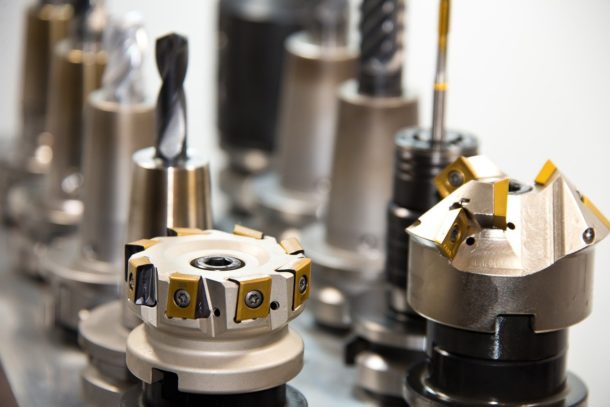
The Early Days of Cutting in Manufacturing
Precision cutting techniques can be traced to crude instruments such as hammers, chisels, and saws. These tools were all hand-operated; a great deal of skill and physical effort was needed to make even the most basic of parts. That is why when the requirements for manufacturing increased during the Industrial Revolution, the necessity for better cutting was questioned. This period witnessed mechanical cutting tools operated by steam or simple motors and was more precise and faster than hand tools.
However, early mechanical cutters retained low, precise control until the mid-twentieth century. There were still problems with accuracy for the operators, which sometimes resulted in wasted material or poor-quality products. It was only in the Industrial Revolution, specifically, the use of machine tools in the later part of the nineteenth and beginning of the twentieth century, that producers started attaining scale precision. Screw machines, stamping machines, milling machines, lathes, and drills were necessary for making standardized parts for mass production and global markets.
The Rise of CNC Technology
A manufacturing sector revolution occurred in the mid-twentieth century with the introduction of Computer Numerical Control (CNC). While prior machines could only mechanically follow instructions, the CNC machines could do this with a high degree of accuracy. This enabled manufacturers to develop complex designs and produce items with that design uniformly across many units.
CNC technology also helped eliminate human error because machines could work on them for extended hours and with great precision. Aerospace and automotive industries, and electronics,s in particular, are some industries that embraced CNC cutting tools due to their capacity to produce highly complex parts. This innovation also widened the district of cutting tool applications to metals, plastics, and composite materials, among others.
Manufacturers could still improve productivity if CNC were integrated with modern software. Specifically, engineers could draw their components on CAD software and translate these designs to CNC machines. This interaction between hardware and software has persisted as a mainstay for development in precision cutting.
Functions of Laser and Waterjet Cutting
Laser and waterjet cutting have become more precise, especially in recent decades. Laser cutting involves focusing light and using it to cut through materials with a lot of precision, which is useful when cutting thin or complex shapes. It is highly appreciated in medical device manufacturing, where the allowable deviations are negligible.
Waterjet cutting, however, uses high-pressure water with garnet particles for abrasive cutting of a broad range of materials. On the other hand, waterjet systems do not cause thermal distortion as laser cutting systems cut materials. This versatility has made the waterjet cutting method popular across the construction industry and even aerospace.
Laser cutting has remained equally essential for manufacturers looking for precision and speed with flexibility from waterjet cutting. Organizations such as Pacific Trail Manufacturing still rely on these technologies to offer solutions to various industry needs.
Automation and the Future of Precision Cutting
Precision cutting and automation are becoming an essential part of the manufacturing industry as it progresses. Some of the work scientists could not accomplish earlier can now be done by robotic systems fitted with perfect sensors and artificial intelligence algorithms. These systems can be set up to respond to changes, and thus, the production lines can be maintained optimally.
One of the most inspiring trends is the IoT application of Industry 4.0, where cutting tools are smartly interconnected. Intelligent factory machines can enable information gathering and provide solutions for operating to achieve maximum efficiency, decrease loss, and determine when a machine requires servicing. Such high connectivity guarantees that precision cutting will remain integral to contemporary production processes.
Technologies such as additive manufacturing or 3D printing and hybrid machining will likely serve as an addition to cutting processes. With the help of cutting and material deposition, the manufacturers can create lightweight, durable, and cheap parts simultaneously.
Conclusion
The history of precision cutting in manufacturing is a part of the human desire for improvement. From mere hand tools to today’s complex CNC, laser, and waterjet systems, every innovation has been achieved based on another to change the future. Thus, precision cutting will remain a critical force for the industry as driven by automation and connectivity. Pacific Trail Manufacturing is one of the companies that embodies the idea of developing new tools that will help manufacturers face the future and achieve success with incredible accuracy.

When water damage strikes, it’s a stressful and overwhelming experience. Whether caused by a burst pipe, severe storm, or leaky roof, acting quickly is essential to prevent further damage. But with so many restoration companies out there, how do you find the right one? Here’s a guide to help you select the best water damage Read more
When water damage strikes, it’s a stressful and overwhelming experience. Whether caused by a burst pipe, severe storm, or leaky roof, acting quickly is essential to prevent further damage. But with so many restoration companies out there, how do you find the right one? Here’s a guide to help you select the best water damage restoration service for your home.
Look for Certification and Licensing
The first step to finding a reliable service is checking for proper certification. A trustworthy water damage restoration company will have certifications from reputable organizations like the Institute of Inspection, Cleaning, and Restoration Certification (IICRC). This indicates that the team is trained in industry-standard techniques and follows best practices.

Check Experience and Expertise
Experience matters when dealing with water damage. Choose a company that has a solid track record and expertise in handling similar cases. For instance, restoring a flooded basement requires different skills compared to addressing mold growth from a slow leak. Ask questions such as the following:
- How long have they been in business?
- Have they dealt with water damage similar to yours?
- What is their approach to handling emergencies?
Availability and Response Time
Water damage is time-sensitive, so you need a company that can respond quickly. Look for services that offer 24/7 availability and can begin work as soon as possible. Fast action can make the difference between minor repairs and significant, costly damage. When researching companies, check online reviews or ask for references to confirm their responsiveness and reliability.
Evaluate Their Equipment and Techniques
Advanced technology and methods are key to effective water damage restoration. The best companies use professional-grade equipment such as industrial-strength dehumidifiers, air movers, and moisture meters. They should also employ techniques to detect hidden water damage, like thermal imaging cameras. Ask if they follow a thorough process that includes:
- Water extraction
- Drying and dehumidification
- Cleaning and sanitizing
- Repair and restoration

Ask About Insurance Assistance
Dealing with insurance can be a hassle during an already stressful time. A good restoration company will assist you with the claims process, providing documentation and working directly with your insurance provider to make things easier for you. Be cautious of companies that promise to cover your deductible or guarantee full insurance coverage without seeing the scope of the damage. These can be red flags for unethical practices.
Prioritize Transparency and Communication
Clear communication is vital when hiring any contractor. The company should provide a detailed estimate before beginning work and explain each step of the restoration process. Beware of vague pricing or unclear terms. A reputable company will ensure you understand the costs involved and what your insurance will cover before starting the job.
Look for Local Recommendations
Local companies often have a vested interest in maintaining their reputation in the community. Ask friends, family, or neighbors for recommendations. Additionally, you can read online reviews on platforms like Google, Yelp, or the Better Business Bureau to gauge a company’s reputation.
Endnote
Selecting the right water damage restoration service is crucial to safeguarding your home and peace of mind. You should consider the above factors to ensure an effective and efficient restoration. When disaster strikes, remember the importance of acting fast. A reliable water damage restoration company can be your lifeline, helping you restore your home and get back to normal as quickly as possible. With the right professionals by your side, you can tackle even the toughest water damage challenges with confidence.
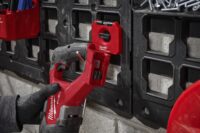
If you’re a plumber, then you know how crucial it is to have the right tool on hand when you need it. The most effective way to ensure this is to turn your work vehicle into a mobile workshop, essentially carrying every tool, supply, and spare part you may need for all the types of Read more
If you’re a plumber, then you know how crucial it is to have the right tool on hand when you need it. The most effective way to ensure this is to turn your work vehicle into a mobile workshop, essentially carrying every tool, supply, and spare part you may need for all the types of jobs you regularly do.
Ensuring that your plumbing vehicle is equipped with the right equipment will ensure that you’re not only organized but ready to respond to a call out at a moment’s notice. We take a closer look at a few features you’ll need to create an effective mobile workshop.
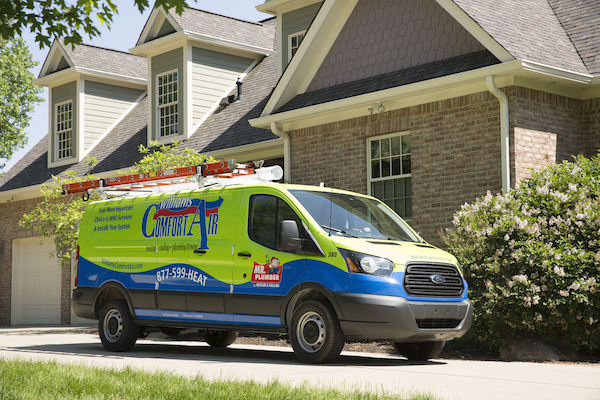
Get Insured
Getting your plumbing vehicle insured is the first step in having a competitive edge over other plumbers. Before you even start setting up your mobile workshop, it’s essential to have the right mechanical breakdown insurance in the event of vehicle failure en route to a job.
A quick look and understanding of what is mechanical breakdown insurance will highlight that this type of coverage extends to everything from accidents to engine failures. It’s essential to choose the option best suited to your specific professional needs.
Add a Partition
If your plumbing vehicle doesn’t already have a partition that separates the diver’s cabin from the workspace, it’s essential to add one. This ensures anyone in the front of the vehicle isn’t injured by loose tools that may slide forward. Mesh screen partitions are an option to consider if you want to keep an eye on the back of the vehicle while driving.
Install Shelving
Shelving is essential for organizing your plumbing vehicle and an effective way to create as much storage space as possible. Since shelving can be customized to fit a range of different shapes and sizes, you’ll easily find the best shelves that suit your vehicle’s dimensions.
Adjustable shelves or folding options are also a good idea if you’re limited in space. Check for shelves that can accommodate hooks for any smaller items that may get lost if they’re not secured.
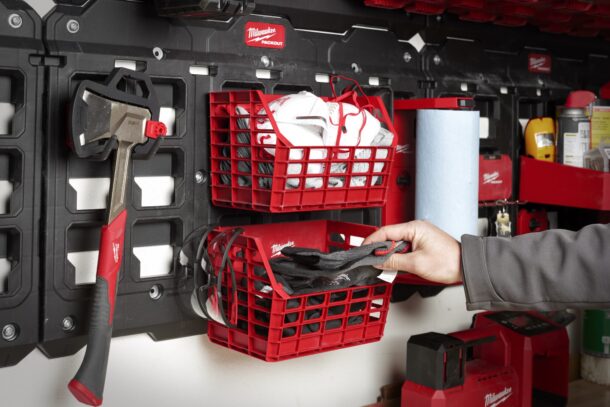
Include Floor Mats
While some may regard floor mats as unnecessary in a work van, adding a mat in the section where you work, or store components will reduce the dirt and debris accumulating there. They not only provide a non-slip surface to work but also reduce the cleaning needed and prevent damage to the floor. Rubber options are a good choice here.
Add Cabinets and Bins
A cabinet is an effective way to store all the smaller, loose tools that you may need, such as TwinGrip pliers and screwdrivers. Bins are ideal for storing small plumbing components and spare parts needed for basic repairs and replacements. Having the parts on hand means there are no unnecessary delays because you need to leave the job to find the necessary components.
Use the shelves, bins, and cabinets to organize the tools you use most frequently. The more organized you are, the easier and quicker the job can get done. If you have an assistant who also uses the tools, consider labeling the drawers and cabinets to ensure that everything stays organized.
Some examples may include “cleaning supplies” or “repairing tools”. It’s also a good idea to add latches to all the drawers and doors on your cabinets, as this will keep them from sliding open.
Opt for a Van Rack
Depending on the type of plumber you are and the types of jobs you do, the interior of your vehicle may not be big enough for ladders and longer components. The top of your vehicle may be better suited for securing ladders and long pipes. To achieve this, consider adding a van rack or conduit carrier to keep items secure.
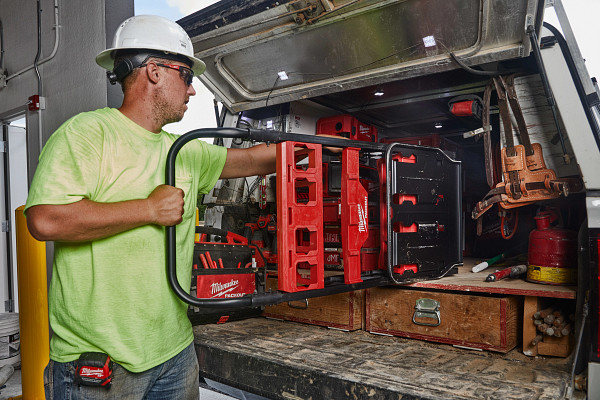
Consider Ready-to-Fit Van Packages
If you’re not sure how you’re going to fit everything into your vehicle, consider opting for a van package. These are shelving solutions specially designed for storing plumbing equipment in the back of a van. Typically, these packages consist of the following:
- Partition
- Shelving
- Cabinets
- Storage hooks
While these packages are a good idea, they may contain aspects that you don’t need or it may be a struggle to get them to fit if you have other shelves already in the vehicle. You may need to check with more than one supplier for the option that works most effectively for your vehicle dimensions.
Wrapping Up
Whether you work for a contracting company or you have your own plumbing business, having a fully stocked plumbing vehicle is crucial. You will not only look more professional and reliable but will also get the job done quickly because you have what you need available when you need it. In a profession where time is money, this makes the most economic sense.
